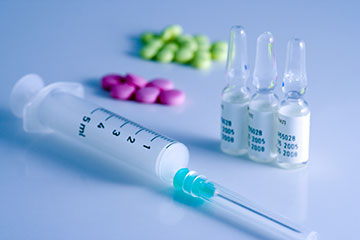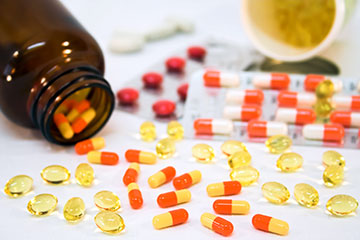Diet, Exercise and Diabetes
If you suffer from diabetes, it often requires a good deal of lifestyle change to keep the condition under control. This isn't always as difficult or overwhelming as it might first appear. This article gives advice on how to tailor your diet and exercise regime to cope with your diabetes, as well giving information on the types of treatment available to you.
According to the World Health Organization (WHO) at least 180 million people worldwide have diabetes. There are three types of diabetes. Type 1 diabetes occurs when the pancreas doesn't produce enough insulin to regulate the blood sugar levels. Type 2 diabetes occurs when the insulin isn't being used properly. Gestational diabetes occurs during pregnancy, and is only a temporary condition. However, many women with gestational diabetes go onto develop type 2 diabetes at a later date.
 It's important for diabetes sufferers to follow a regulated diet to control the disease and keep control of their blood sugar levels. A good starting point is to follow a healthy diet with around half of your energy coming from foods rich in carbohydrates and fiber. Starchy foods should be taken with or during each meal. Meals should be spaced at regular intervals to stop blood sugar levels from falling too much (they fall without food).
It's important for diabetes sufferers to follow a regulated diet to control the disease and keep control of their blood sugar levels. A good starting point is to follow a healthy diet with around half of your energy coming from foods rich in carbohydrates and fiber. Starchy foods should be taken with or during each meal. Meals should be spaced at regular intervals to stop blood sugar levels from falling too much (they fall without food).
A diet which is rich in fruit, vegetables and grain is essential for anyone with diabetes. Whole grain is a good idea for added fibre. This is a good basis for a diet which is also low in salt and saturated fat to keep cholesterol as low as possible. No more than 30% of calories should come from fatty foods and only 10% of calories should come from saturated fats. Alcohol should only be consumed in moderation.
Exercise can help to control blood sugar levels as you use up more glucose when you exercise compared to when you are not active. This helps to keep blood sugar levels down to a more manageable level.
There are certain risks associated with exercising with diabetes but these are easily overcome. Eat a carbohydrate snack if your blood sugar is less than 100 mg/dl before exercising. As a basic guideline, your normal diet should be modified to add an extra 15g of carbohydrate per fifteen minutes of intensive exercise or half an hour of less intensive exercise.
 Recommended forms of exercise include gentle workouts such as walking, housework, gardening, as well as more intensive activities such as cycling, football and golf. Not all sports are recommended though. Intensive activities such as playing rugby or tennis may cause problems if they are too rigorous and last too long. Climbing, gliding or scuba diving are generally not recommended, and require expert supervision if carried out.
Recommended forms of exercise include gentle workouts such as walking, housework, gardening, as well as more intensive activities such as cycling, football and golf. Not all sports are recommended though. Intensive activities such as playing rugby or tennis may cause problems if they are too rigorous and last too long. Climbing, gliding or scuba diving are generally not recommended, and require expert supervision if carried out.
Ideally, exercise should be planned in advance to make the necessary changes to diet and treatment to compensate.
There are sugar free products available for diabetes sufferers, but they are not necessarily the best option. Blood sugar levels are actually based on how much carbohydrate is in the blood, not the amount of sugar, so reducing the amount of sugar in the diet won't automatically lower the blood sugar level if the sugar-free variety still contains as much as carbohydrate as the with-sugar variety. In addition, the sugar free variety is often less appetizing and more expensive to boot.
A common mistake with sugar free products is thinking that they contain less calories than the normal variety, and then eating more of them. This plays havoc with the blood sugar and could land you in more trouble than if you just stuck with regular products in the first place. For many people the better option usually is to continue eating the foods that you would normally eat, but do it in moderation and keep track of how much carbohydrate you consume, rather than obsess about sugar levels, which won't make much difference in the long run.
As well as diet and exercise, diabetes is also controlled and treated using medicine.
 Type 1 diabetes can only be treated using insulin, which is injected. Tablets wouldn't be an effective type of treatment as the stomach's digestive juices would destroy the insulin before it could do its job, so injections are currently the only available treatment for type 1 diabetes. These injections are usually self-administered, two or three times a day and scheduled around meals.
Type 1 diabetes can only be treated using insulin, which is injected. Tablets wouldn't be an effective type of treatment as the stomach's digestive juices would destroy the insulin before it could do its job, so injections are currently the only available treatment for type 1 diabetes. These injections are usually self-administered, two or three times a day and scheduled around meals.
Type 2 diabetes is not always treated using medicine. Diet and exercise alone often do a good job of controlling the disease depending on blood sugar levels and glycosylated haemoglobin levels. However, even if your diabetes is not currently controlled by medication, it may need to be in the future. Type 2 sufferers often combine insulin injections and oral medication as treatment.
There is lots of medicine available for treating type 2 diabetes. These include Avandia, Starlix, Januvia and Glucophage.
Avandia is a special kind of diabetes medicine. Rather than making your body produce more insulin, it works to help your body use what insulin it does make more efficiently, thus lowering and controlling blood sugar levels. It can be taken alone or in conjunction with other medication. It is used alongside diet and exercise, which means you need to be following diet and exercise guidelines for Avandia to work to its full capacity. Avandia is just one product in a range of drugs called thiazolidinediones (TDZs). Another example of a TDZ is Actos.
 Starlix works by encouraging your body to release insulin at the start of a meal to control blood sugar levels. Thus, it is taken with meals. It can be taken on its own or alongside Glucophage medication. Starlix is best used in conjunction with metformin or a TDZ to effectively control blood sugar levels for the entire day.
Starlix works by encouraging your body to release insulin at the start of a meal to control blood sugar levels. Thus, it is taken with meals. It can be taken on its own or alongside Glucophage medication. Starlix is best used in conjunction with metformin or a TDZ to effectively control blood sugar levels for the entire day.
Glucophage (also known as metformin) works to decrease sugar production to lower blood sugar levels but it does not increase the amount of insulin produced. It can be taken alone or alongside insulin injections or other diabetes medication. Like Avandia, it works best alongside a healthy diet and exercise regime.
Januvia is purely used to treat type 2 diabetes and is used to lower blood sugars alongside diet and exercise. It can be taken alone or with other medication. It is taken after meals to reduce blood sugar when it is at its highest. It also works to increase insulin production after meals and decrease sugar production. It won't cause hypoglycaemia (dangerously low blood sugar level) as it only works when blood sugar is high.
If you are a Type II diabetic and you want to lose weight, consider the meal programs offered by Nutri System and Medifast. Both offer meal replacement programs specifically designed for helping those with Type II diabetes to lose weight. For diabetics, these healthy, convenient meal plans make it really easy to lose weight, and they have been shown to be much more successful at delivering weight loss than other alternatives.
Diet Plan Coupons
- Nutrisytem
- Medifast
- Diet to Go
- Weight Watchers
- Jillian Michaels
- South Beach Diet
- Cookie Diet
- Duke Diet
- Bob Greene BestLife
- eDiets
- Sonoma Diet
- Denise Austin
- Biggest Loser Club
